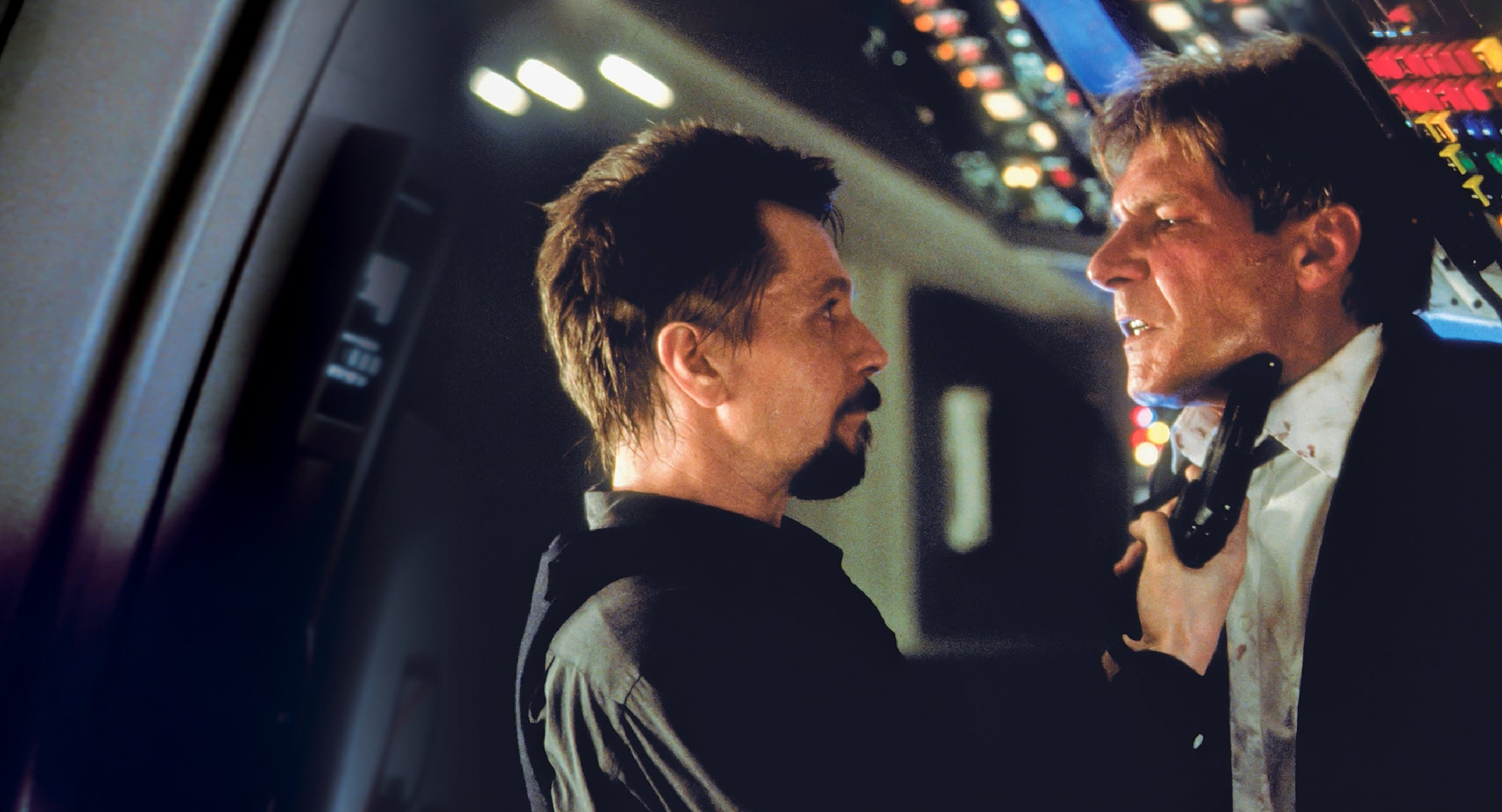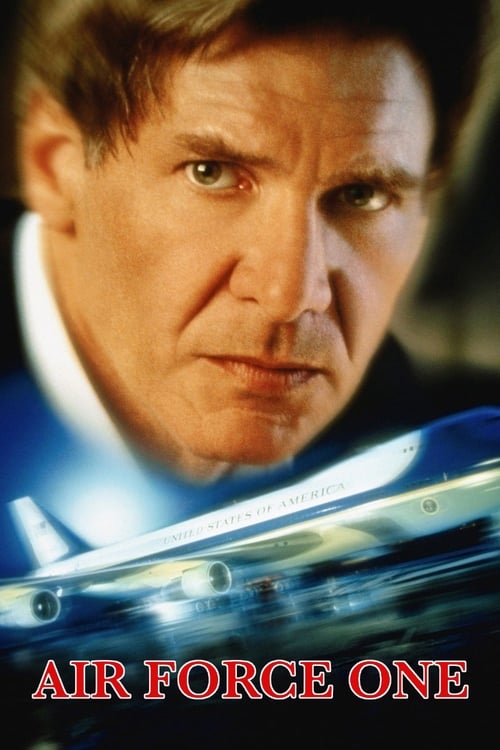Air Force One – Film Review
Published August 30, 2023

After making a speech in Moscow vowing to never negotiate with terrorists, President James Marshall boards Air Force One with his family and advisers. When a group of terrorists led by Ivan Korshunov hijacks the flight, the President’s principles are put to the test. Feigning escape, ex-solider Marshall stows away in the aircraft and must race against time to rescue his family and everyone else on board.
Wolfgang Petersen‘s 1997 action-packed film, Air Force One, takes viewers on a nail-biting journey through political intrigue and airborne suspense. Starring Harrison Ford as the President of the United States, the film offers a thrilling mix of heart-pounding action, intense performances, and a dash of patriotic fervor. While it soars to great heights in some aspects, it faces turbulence in others, ultimately landing as a solid 3.5/5 cinematic experience.
Air Force One kicks off with a strong premise: a group of Russian terrorists hijacks the President’s official plane, Air Force One, with the intent to force the release of their leader from prison. The tension is palpable from the beginning, as the stakes are immediately set high. The film’s ability to maintain this tension throughout is commendable, aided by the confined setting of the plane and the ticking clock scenario. The initial setup successfully hooks the audience, promising an engaging narrative.
Harrison Ford’s portrayal of President James Marshall is a highlight of the film. Ford effortlessly embodies the role of a capable, resourceful leader who finds himself in a dire situation. His charismatic screen presence shines, making the character’s decisions and actions believable. Opposite him, Gary Oldman takes on the role of Ivan Korshunov, the lead terrorist. Oldman’s portrayal is chillingly convincing, capturing the ruthless determination of his character. The supporting cast, including Glenn Close as Vice President Kathryn Bennett and William H. Macy as Major Caldwell, deliver solid performances, though some characters lack depth and development.
Wolfgang Petersen’s direction maintains a frenetic pace, befitting the film’s genre. The close-quarters setting of the plane is effectively utilized to create a sense of claustrophobia and urgency. However, the film occasionally falls into predictable action movie tropes, with explosions and gunfire sometimes feeling more like obligatory elements than essential plot developments. The film’s cinematography by Michael Ballhaus captures the tension of the airborne crisis, though some shots feel confined due to the plane’s limited space. The use of lighting to create mood and atmosphere is commendable, enhancing the overall visual experience.
The script by Andrew W. Marlowe serves its purpose in driving the plot forward, but it occasionally stumbles with clichéd lines and melodramatic moments. The exchanges between the President and the terrorists, while tense, sometimes border on the unrealistic. The film’s dialogue often leans heavily on patriotic rhetoric, which can feel heavy-handed and detract from the film’s authenticity. However, there are instances of clever wordplay and well-crafted lines that punctuate the tension with moments of levity.
The film’s pacing is a mixed bag. While the initial setup and the hijacking itself are riveting, there are moments in the middle where the pace drags. Subplots involving the Vice President and the White House staff, while attempting to provide context, occasionally feel like distractions from the central conflict. However, the film regains its momentum in the third act, delivering a heart-pounding climax filled with suspenseful sequences and unexpected twists.
Jerry Goldsmith‘s score heightens the film’s tension and contributes to its overall atmosphere. The music complements the action sequences, enhancing their impact and providing emotional cues for the audience. The score strikes a balance between patriotic themes and suspenseful motifs, contributing to the film’s identity as a thrilling political action movie.
Air Force One succeeds in delivering a high-flying thriller that capitalizes on a strong premise, intense performances, and moments of genuine suspense. While it occasionally stumbles with clichés, predictability, and melodrama, its gripping narrative and charismatic lead performances, particularly by Harrison Ford and Gary Oldman, keep viewers engaged. Wolfgang Petersen’s direction and the effective use of the confined plane setting contribute to the film’s tense atmosphere. While not without its flaws, Air Force One manages to soar above many action films of its time, making it a recommended watch for those seeking an adrenaline-packed cinematic experience.
